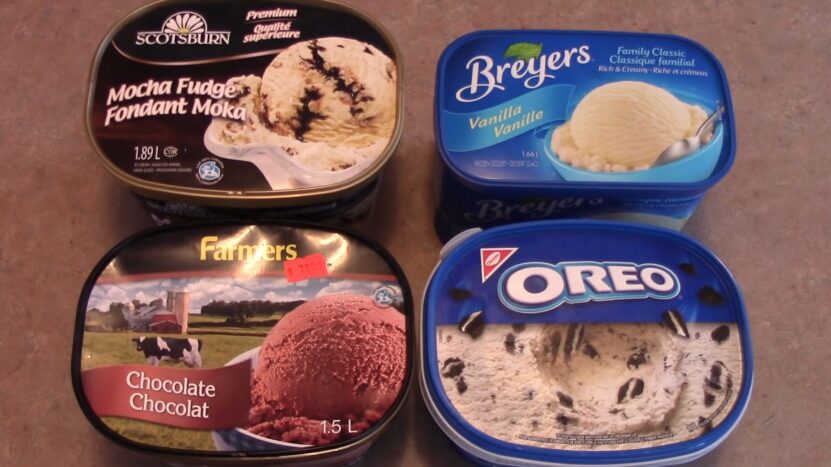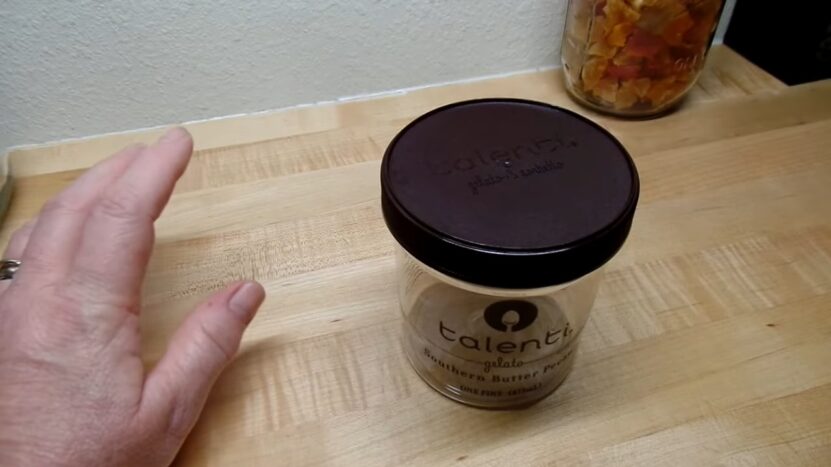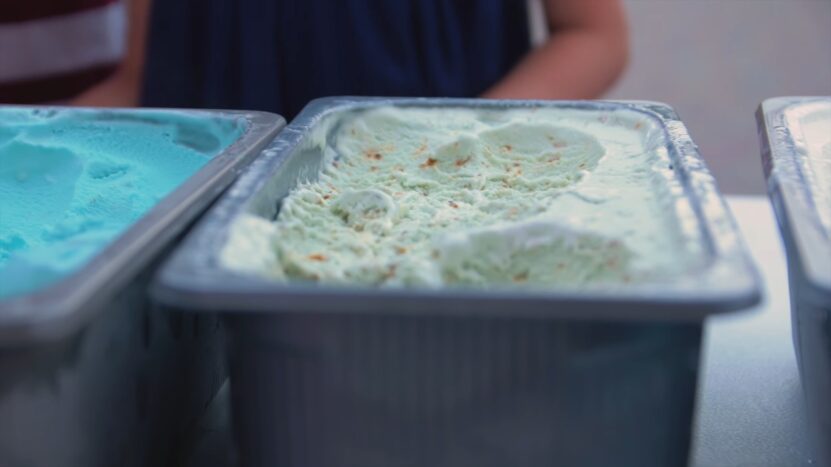Ice cream, a delightful treat cherished by many, has a shelf life that’s more intricate than the mere expiration date on its packaging. This longevity is influenced by a myriad of factors, from the type of ice cream to the conditions in which it’s stored.
While the expiration date offers a guideline, it’s essential to recognize that the actual shelf life can vary. For instance, while an unopened container might last for months in the freezer, once opened, its freshness diminishes rapidly.
Beyond just the taste, consuming expired ice cream can pose health risks, making it crucial to understand the signs of spoilage and the best storage practices.
Shelf Life of Ice Cream

Ice cream, a universally adored treat, is often taken for granted when it comes to its shelf life. Many of us rely solely on the expiration date stamped on the container, but there’s so much more to consider.
Factors Influencing Ice Cream Shelf Life
1. Type of Ice Cream
Not all ice creams are created equal. Dairy-free options might have different preservatives and ingredients than traditional dairy ice creams. Gelato, known for its creamy texture and rich flavor, has a different composition than sorbet, which is fruit-based and dairy-free.
Each variety has its unique shelf life, so it’s essential to be aware of the differences.
2. Storage Conditions
The longevity of your ice cream is significantly impacted by how you store it. A consistent cold temperature is paramount.
Fluctuations in temperature can cause ice crystals to form, affecting the texture and overall quality.
3. Expiration Date
While it’s a crucial indicator, the expiration date isn’t the end-all-be-all. Generally, an unopened container of ice cream can comfortably last 2-3 months in the freezer.
But once that seal is broken, the clock starts ticking faster. It’s advisable to consume it within 1-2 weeks to enjoy its optimal flavor and texture.
Signs of Expired Ice Cream
Relying solely on the expiration date can be misleading. Here are some signs that your ice cream might have seen better days:
- Taste and Smell: Trust your senses. An off-flavor or a peculiar odor is nature’s way of saying, “Maybe skip this one.”
- Texture: Quality ice cream should be smooth. If yours feels grainy, icy, or just “off,” it’s a sign that it might be past its prime.
- Bacterial Presence: Even if everything seems okay on the surface, harmful bacteria might be lurking within, especially if the ice cream has been stored improperly.
Health Risks of Consuming Expired Ice Cream
It’s not just about the compromised taste. Consuming expired ice cream can have severe health repercussions:
- Food Poisoning: Old ice cream can be a breeding ground for bacteria, leading to unpleasant symptoms like nausea, vomiting, and abdominal cramps.
- Severe Cases: In rare situations, such food poisoning can be so severe that it requires hospitalization.
- High-Risk Groups: Certain groups, like infants, the elderly, and those with compromised immune systems, should exercise extra caution. They’re more susceptible to the adverse effects of consuming expired products.
Tips to Prevent Food Poisoning from Ice Cream
To make sure every scoop of ice cream remains a delightful experience, follow these tips:
- Expiration Awareness: Make it a habit to check the expiration date before purchasing.
- Avoid Refreezing: Once thawed, ice cream’s texture and quality are compromised. Refreezing it only exacerbates the issue.
- Trust Your Senses: If something feels, smells, or tastes off, it’s better to err on the side of caution and discard it.
- Optimal Storage: A consistent temperature of 0°F or below in your freezer ensures your ice cream remains in peak condition.
Identifying Spoiled Ice Cream
While the expiration date is a good initial indicator, it’s not the only sign that your ice cream might have gone bad. Here are some red flags to watch out for:
- Off-flavor or Smell: A sour or unusual odor is a clear sign that your ice cream might be past its prime. If it doesn’t smell like the delightful flavor it’s supposed to be, it’s time to toss it.
- Grainy or Icy Texture: If your ice cream has lost its smooth consistency and feels more like a gritty slush, it’s a sign of temperature fluctuations or prolonged storage.
- Visible Mold: Any signs of mold, be it white, green, or any other color, are a definite no-go. Mold indicates bacterial growth, making the ice cream unsafe for consumption.
- Change in Color: If your vanilla looks a bit yellow or your chocolate has a grayish hue, it’s best to err on the side of caution and discard it.
Remember, consuming spoiled ice cream isn’t just about a compromised taste; it can also pose health risks. If you spot any of these signs, it’s best to throw the ice cream away.
Preserving the Goodness

To ensure that your ice cream remains fresh and delicious, follow these storage tips:
- Optimal Freezer Temperature: Always store ice cream at a consistent temperature of 0°F or below. This not only preserves its flavor and texture but also prevents bacterial growth.
- Airtight Containers: If you find yourself treating yourself to some ice cream and you intend to keep the remaining portions for later, it is recommended that you transfer it into an airtight container. By doing so, you can prevent the ice cream, as well as any other desserts, from adopting the flavors of other items in your freezer, thus preserving its original taste.
- Avoid the Freezer Door: The door is the warmest part of the freezer due to frequent opening and closing. Storing ice cream here can lead to thawing and refreezing, compromising its quality.
Additional Safety Precautions
To ensure that every scoop is safe and enjoyable, keep these additional tips in mind:
- Hygiene First: Always wash your hands thoroughly before and after handling ice cream. This prevents any potential contamination.
- Use Clean Utensils: Every time you scoop out some ice cream, ensure that the spoon or scooper is clean. This reduces the risk of introducing bacteria into the container.
- No Refreezing: If your ice cream has thawed, resist the urge to refreeze it. The change in temperature can affect its texture and might also make it a breeding ground for bacteria.
FAQ
Can I eat 3-day-old ice cream?
It is generally safe to eat 3-day-old ice cream, but it is important to check for signs of spoilage. If the ice cream has a sour or rancid smell, a slimy texture, or a grainy or discolored appearance, it is best to throw it away.
What happens if I eat ice cream that has been left out overnight?
If ice cream has been left out overnight, it is best to throw it away. The bacteria that can cause food poisoning can grow rapidly in temperatures between 40 and 140 degrees Fahrenheit. Even if the ice cream does not look or smell spoiled, it is still not safe to eat.
Can I get sick from eating ice cream that has been melted and then refrozen?
Yes, it is possible to get sick from eating ice cream that has been melted and then refrozen. When ice cream melts, the bacteria that are present in the ice cream can multiply. When the ice cream is refrozen, the bacteria can survive.
Final Words
Ensuring the freshness and safety of ice cream is paramount not just for the optimal taste experience but also for health reasons. Recognizing the signs of spoilage, such as off-flavors, unusual textures, or visible mold, is essential.
Moreover, adhering to best storage practices, like maintaining the right freezer temperature and using airtight containers, can prolong its quality. Additional precautions, like washing hands and using clean utensils, further safeguard against potential health risks.
Ultimately, while ice cream is a delightful indulgence, it’s vital to consume it responsibly and be aware of its shelf life and potential hazards.
